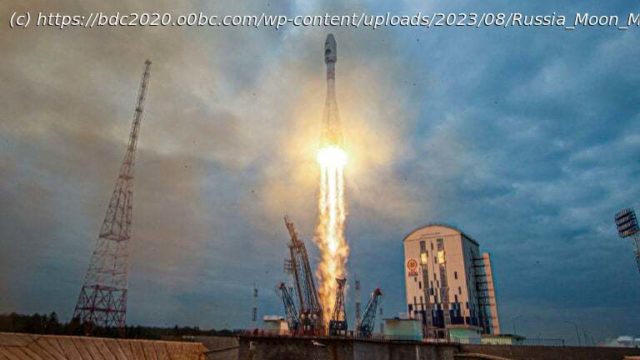The robotic Luna-25 spacecraft appeared to have “ceased its existence” after a failed orbital adjustment, the space agency Roscosmos said.
A Russian robotic spacecraft that was headed to the lunar surface has crashed into the moon, Russia’s space agency said Sunday, citing the results of a preliminary investigation a day after it lost contact with the vehicle.
It is the latest setback in spaceflight for a country that during the Cold War became the first nation, as the Soviet Union, to put a satellite, a man and then a woman in orbit.
The Luna-25 lander, Russia’s first space launch to the moon’s surface since the 1970s, entered lunar orbit on Wednesday and was supposed to land as early as Monday. At 2:10 p.m. Saturday Moscow time, according to Roscosmos, the state corporation that oversees Russia’s space activities, the spacecraft fired its engine to enter an orbit that would set it up for a lunar landing. But an unexplained “emergency situation” occurred.
On Sunday, Roscosmos said that it had lost contact with the spacecraft 47 minutes after the start of the engine firing. Attempts to reestablish communications failed, and Luna-25 had deviated from its planned orbit and “ceased its existence as a result of a collision with the lunar surface,” Roscosmos said.
An interagency commission would be formed to investigate the reasons for the failure, it added.
Luna-25, which launched Aug. 11, was aiming to be the first mission to reach the moon’s south polar region. Government space programs and private companies worldwide are interested in that part of the moon because they believe it may contain water ice that could be used by astronauts in the future.
The main purpose of Luna-25 was to test technology for landing on the moon, and the loss of the lander during a less risky phase of the mission will add scrutiny to Russia’s space struggles.
For missions headed to the moon’s surface, the two most nerve-wracking moments are the rocket launch from Earth and the landing itself. Three lunar landing attempts in the past four years — by India, an Israeli nonprofit and a Japanese company — all successfully maneuvered in orbit around the moon before failing during the last few minutes descending to the surface.
When missions are lost during orbital engine firings, the cause often turns out to be shoddy manufacturing and inadequate testing. Those shortcomings were the basis for the failure of Russia’s last major robotic interplanetary probe, Phobos-Grunt, in 2011. Another factor could be embarrassing human error, such as when NASA’s Mars Climate Orbiter burned up in the Martian atmosphere in 1999 because of a mix-up between metric and imperial units.
Natan Eismont, a senior scientist at the Space Research Institute of the Russian Academy of Sciences, which led the scientific operations of Luna-25, said the spacecraft’s engine had not performed as designed during burns to adjust the spacecraft’s course.
“What I can say, and it was noticed by outside observers, that the correction somewhat deviated from what has been stated,” said Eismont, who said he was not directly involved with the mission.
This mission controllers “managed to cope with it successfully until the last maneuver,” Eismont said.






